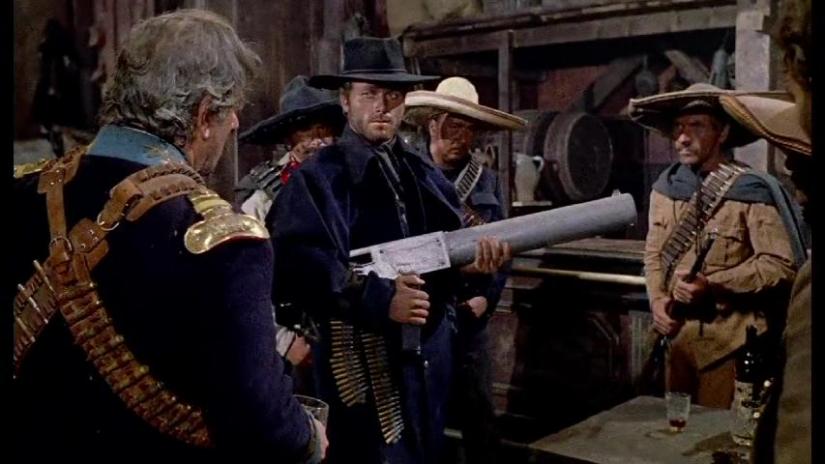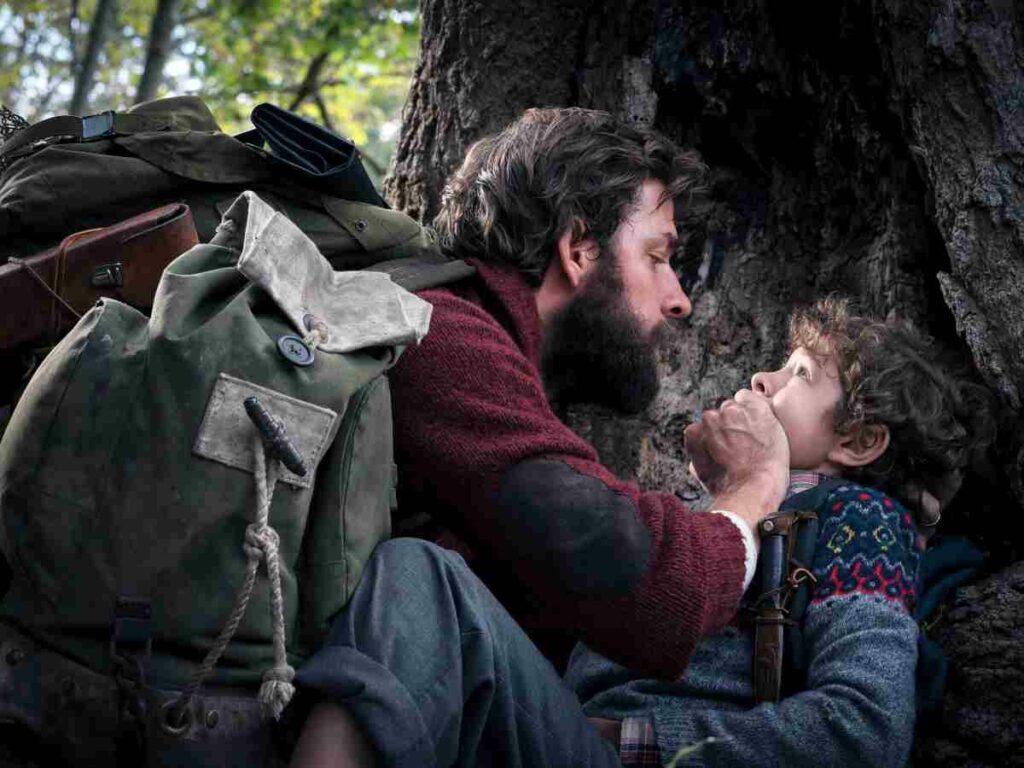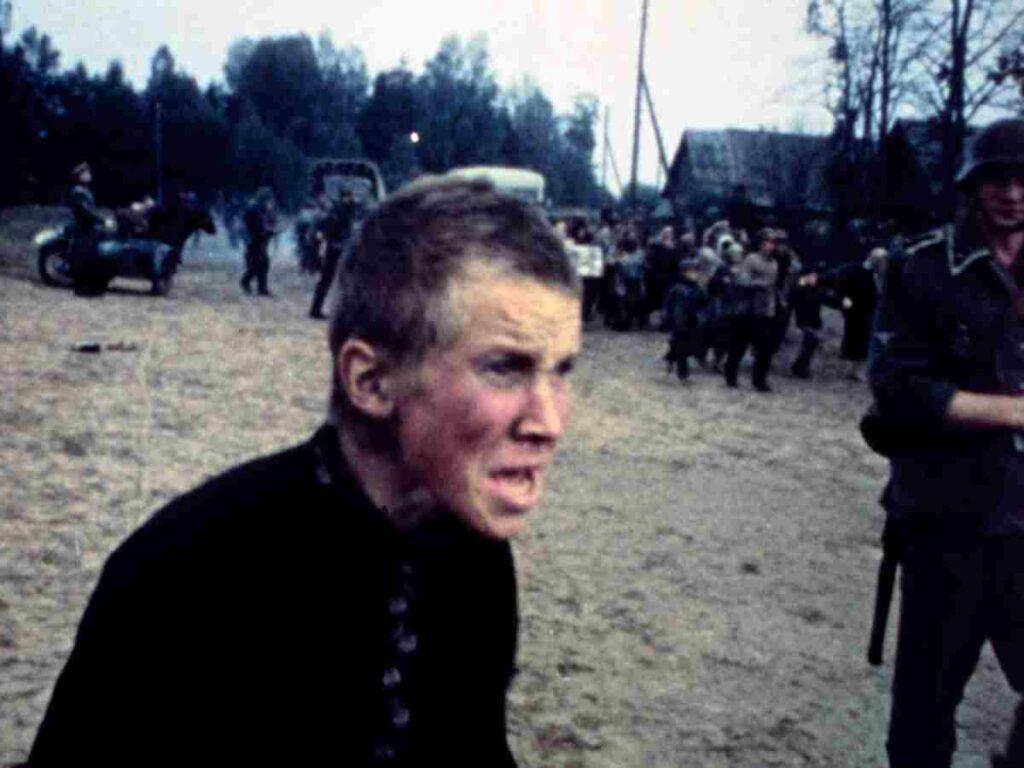The path meant to tread on is drenched with mud — the kind that seeps up to your boots and pulls on your legs, trying to swallow you within the unending abyss below. A lone man walks on, dragging an ominous coffin behind him; each step feeling like a mile, the weight of the coffin weighing him down. But he walks on. And then you hear his name, through the iconic score echoing in the background — Django. And this Django is not Tarantino’s savage slave version. This guy is from 1966 and he is just as cool as the new one. Just take a look at the opening and you will surely understand why this movie has a devoted cult following. Perhaps you would even want to join that cult after watching this milestone of a film.
Sergio Corbucci’s Django (1966) is one of the best Spaghetti Westerns that does not feature Clint Eastwood. It is a celebration of all the clichés in the genre and is arguably Franco Nero’s breakthrough film. The opening scene is almost Biblical in its capacity to invoke mystery and awe through something so uncouth yet graceful in its own way.
The movie does not shy away from tackling controversial political topics. The Union versus Confederate issue is subtly touched upon in the movie. But the brilliance of this illustration lies in the secret behind its portrayal. The issue is never mentioned outright in the movie. But the implications of that major Civil War has caused ripples that are irreversible, leading to indispensable implications on the lives of all the characters. The effect creeps into the daily lives of all the inhabitants, silently but quite noticeably. This technique of filmmaking prevents the overbearing nature of such political issues turning the entire film into a propaganda piece. Many great movies have suffered from this fatal flaw.
We then witness the female lead, Maria, being chained and whipped on a bridge by a Mexican gang. She is soon rescued by the henchmen of an ex-Confederate officer, Jackson. It seems Maria is safe, but soon the movie makes us realize what it is truly about. It is not a tale of salvation; far from it. It is a gory and gruesome mirror of reality, narrating the stories of those who are stuck in between the ravages of two warring sides. This point is quite well illustrated as the henchmen then try to burn Maria on a cross. Our drifter protagonist, Django, then comes in and saves the day in a fashion that Eastwood would be proud of.
The main motive of the movie has thus been, brilliantly illustrated, the later ghost town incidents just being an extension of the same metaphor. The frontier that has been depicted in the movie is not John Ford’s frontier; it’s a much more brutal one. The violence depicted in the film is perhaps what inspired Tarantino’s Django Unchained. The plot is virtually non-existent. Sometimes, the motives of the characters are not clear. But this, in no way, is a demerit to the movie. The plot hangs by a shoelace, but that’s how life is. The director has taken the “Man with no name” genre and pushed its boundaries to the extreme. Franco Nero’s distant portrayal has often been criticized by many. But how much would a man truly love living in a brutal and unforgiving Western frontier? He looks tired, worn out and damaged.
Another special characteristic of this film is the perfectly balanced genre and tone shifts. I’d rather like to call them genre blends. The movie deftly handles gothic horror and the western genre, juggling them with immaculate precision and dedication. The gothic tone, in the beginning, invokes quite a lot of shock value as this was a film mainly marketed as a Western. The ghost town is a quintessential element of the gothic genre. Mixing it up with the entry of pure evil and very well-written villains makes the transition between the genres smoother than smooth.
The use of violence in the movie is quite commendable and daring. Only B-rated slasher films of that era were using such amounts of gore and ultra-violence. But calling this kind of violence ‘ultra’ is a flaw in itself because it is much closer to real violence than what is usually depicted in most movies. Coming back to the topic, the use of this method allowed for a more realistic take on the whole thing. It allowed for the flick to be much closer to the real world. This, in turn, dramatically raised the stakes and kept the audience on the edge of their seats for the entire duration of the film.
But another thing to be noted is that the film never feels needlessly violent. Rather it acts as a homage to the people who lived or rather survived in that violent era of turbulent America which Corbucci has neither diminished nor whitewashed in order to cater to the masses. He is true to his work and true to the period that he is representing through his art — an untamed, unashamed and unhesitant brutality that engulfs all.
It is quite understandable why Quentin Tarantino would be so influenced, obsessed and inspired by this movie. Dozens of other directors were equally obsessed and rightly so, although they could not produce a masterpiece of the level that either Corbucci or Tarantino did. The theme and the substance of the film fit perfectly with Tarantino’s style. It’s almost like a match made in heaven. The part where Franco Nero and Jamie Foxx talk about the name and Nero says, “I know”, is perhaps one of the best scenes of Django Unchained. The homage paid to the original actor is a testament to the immense amount of contribution it had in the career-shaping of the later director.
Django is not a story of salvation or triumph. For we do see our gunslinger’s hands being bashed in with the by horses and him unable to properly wield a gun — the best gunslinger loses his weapon. Quite tragic yet poetic. All this stylized violence, coupled with the ridiculous body count achieved with the more over-the-top Gatling gun is indicative of one thing and one thing only — life is brutal and unforgiving and one must live with the consequences of his own actions, whether glorious or tragic and the ones that get caught in the crossfire always suffer. And in the case of Django, everyone is caught in the crossfire.
Most of the praise that the film gets is because of the circumstance in which it was created. Its origins are quite similar to Indie films rather than big-budget titles. Many innovative and quite frankly, dangerous steps were taken in the creative process of the film.
So, its classic status mainly stems from the fact that it was first-of-its-kind — a hallmark of innovation. This is quite clear from the emergence of at least thirty to fifty ‘unofficial’ sequels to the movie. 50 goddamn sequels. Can you imagine that? Suddenly everyone wanted to make a Django movie. Some were not even about Django but the name was slapped onto them by the distributors. Thus the legacy of Django was born more from its unyielding fame than people watching it. Often this leads to a film being raised to a pedestal that it actually does not deserve.
But with Django, that is not the case. The applause that this movie receives is well-deserved simply because it really is a great film. So, I would recommend anyone who has not seen it yet, to go and watch it right away. For those of you who would like to experience a bit of Django’s flavour, here’s the trailer. But be warned, for it is cheesy as hell. Don’t make any assumptions about the movie based on it. After all, in those days, trailer-making was not as important nor as expertly-crafted as it is now.
All in all, it’s a must-watch for lovers of the Western genre. A solid flick that will take you through the philosophical and political climates simultaneously and with little effort. Django has an IMDb rating of 7.3, which is really good and a score of 92% on Rotten Tomatoes. As you watch the movie you will be taken through segments both fast and slow.
The pacing is quite incredible because that is the first thing to go downhill in a movie of this sort which has so many intertwined themes and sub-plots. So, before you sit down to watch it make sure you have a bit of time on your hands and a relaxed mind. Because this movie will demand a bit of attention, obviously not as much as Predestination does, but still, quite a bit. And finally, the most important, unforgettable thing that you must remember when you watch Django — the D is silent.
Rating: 3.5/5




